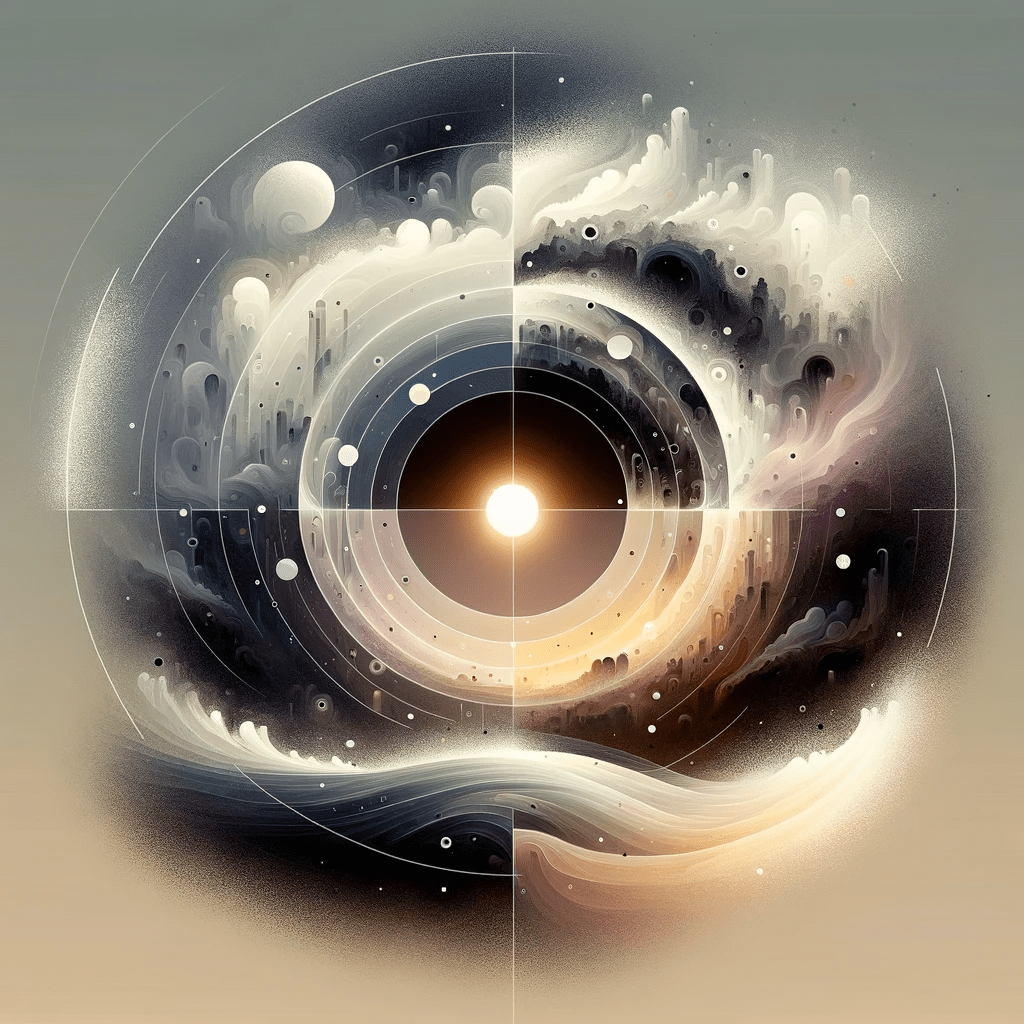Eschatology

Eschatology, derived from the Greek words ‘eschatos’ meaning “last” and ‘logia’ meaning “study”, is a branch of theology that deals with the end of the world or the end times. It is the study of ‘last things’ or ultimate destinies, concerned with death, judgement, and the final destiny of the soul and of humankind. This concept has deep roots in various religions and philosophies, providing both comfort and confusion as it often addresses the mysterious and unknown aspects of our existence.
Eschatology’s roots trace back to ancient civilizations, which often incorporated visions of the world’s end in their myths and religious practices. For instance, ancient Egyptians believed in a cyclical end and rebirth of the world, while Norse mythology predicted an apocalyptic event called ‘Ragnarok’. Christianity, Judaism, and Islam, among other religions, also have eschatological doctrines, each with varying views of end times. For instance, Christianity presents a complex picture of the end times including the Second Coming of Christ, the rapture, the Tribulation, and a final judgement.
In Norse mythology, Ragnarok, which translates to “Fate of the Gods” or “Twilight of the Gods”, is a series of apocalyptic events foretold to lead to the end of the cosmos and the death of many of the Norse gods. This prophecy is primarily detailed in two sources of Old Norse literature – the Poetic Edda and the Prose Edda, both dating from the 13th century but drawing on much older traditional material.
Ragnarok will be preceded by a harsh winter lasting three years, known as the Fimbulwinter, with no summer in between. During this period, societal order will break down, and warfare will engulf the world.
The cataclysmic events of Ragnarok itself begin with the shaking of the earth and the freeing of the monstrous wolf, Fenrir, who was bound by the gods to prevent him from wreaking havoc. The Midgard Serpent, Jormungandr, a sea serpent so large it encircles the Earth, will rise from the depths of the ocean, causing violent storms and flooding. The sky will split open, allowing the fire giants from Muspelheim, led by the giant Surtr, to charge towards the battlefield.
However, eschatology is not limited to religious discourse. Secular interpretations often involve catastrophic events, such as environmental collapse or nuclear war, leading to the end of civilization. These visions continue to be pervasive in popular culture, evidenced in literature, films, and other media.
Eschatological ideas serve multiple purposes. They offer explanations for life’s mysteries and provide a framework for understanding our place in the cosmos. For some, these beliefs can offer comfort or a sense of order amidst the chaos and uncertainties of life. Additionally, they often serve as moral compasses, encouraging people to lead virtuous lives to attain a favorable outcome in the hereafter.
- In Christianity, there’s a belief in the resurrection of the body at the end times (source: 1 Corinthians 15:52).
- In Islamic eschatology, the Mahdi is expected to arrive along with Jesus to defeat the Dajjal, an Antichrist-like figure (source: Sahih Muslim, Book 41, Hadith 7023).
- Some ancient Norse texts, like the Poetic Edda, prophesied an apocalypse called ‘Ragnarok’ (source: Poetic Edda, Völuspá).
- In the book “Surprised by Hope” that Christianity’s aim is not evacuation from earth to heaven, but a new heaven and a new earth.
Eschatological perspectives continue to permeate every facet of our society, influencing not just individual beliefs but also literature, art, politics, and science. As a concept, eschatology encourages us to wrestle with questions about our existence, morality, and the future of our world. The future, after all, is shaped by the actions we take in the present.

